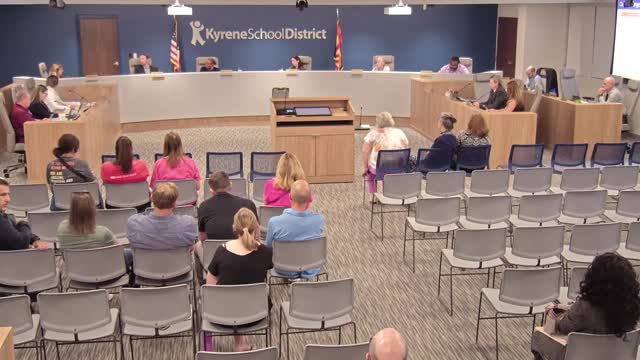Kyrene School District discusses class size challenges and budget implications
April 25, 2025 | Kyrene Elementary District (4267), School Districts, Arizona
Thanks to Scribe from Workplace AI , all articles about Arizona are free for you to enjoy throughout 2025!

This article was created by AI using a video recording of the meeting. It summarizes the key points discussed, but for full details and context, please refer to the video of the full meeting. Link to Full Meeting
The meeting highlighted the district's ongoing efforts to monitor class sizes closely, particularly in the early grades. A key point raised was the balance between adding teachers and providing additional instructional assistant (IA) support when class sizes exceed recommended limits. Board members noted that principals often prefer to enhance IA support rather than disrupt students by splitting classes mid-year, a decision that can be challenging for families to understand.
Superintendent Tanya Purity explained that class size decisions are rooted in the district's strategic plan, which aims to optimize educational outcomes. However, she acknowledged the financial limitations that prevent the district from achieving the ideal class size of 15 students, a benchmark supported by educational research. The current funding model, which provides approximately $5,013 per student, falls short of covering the costs associated with hiring additional teachers and support staff.
Board member Davis raised concerns about the implications of larger class sizes, particularly in grades four and five, where the transition from smaller to larger classes can be jarring for students. The board discussed the need for a more nuanced approach to staffing, especially in schools experiencing higher enrollment pressures. They recognized that while some grades have seen reductions in class sizes, others remain at levels that could hinder student learning.
The conversation also touched on the importance of community engagement in boosting enrollment. Board members emphasized the need to attract families to the district by promoting the benefits of smaller class sizes and quality education. They acknowledged that increasing student numbers could provide the necessary funding to support additional staffing and improve the overall educational experience.
As the meeting concluded, the board members left with a renewed commitment to addressing class size challenges and enhancing the learning environment for all students. The discussions underscored the ongoing struggle to balance educational quality with financial realities, a challenge that will continue to shape the district's future.
Converted from 4-22-2025 Kyrene Governing Board Meeting meeting on April 25, 2025
Link to Full Meeting
Comments
View full meeting
This article is based on a recent meeting—watch the full video and explore the complete transcript for deeper insights into the discussion.
View full meeting